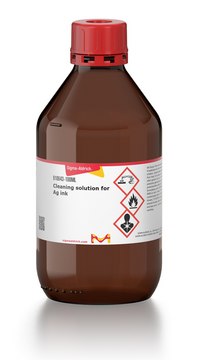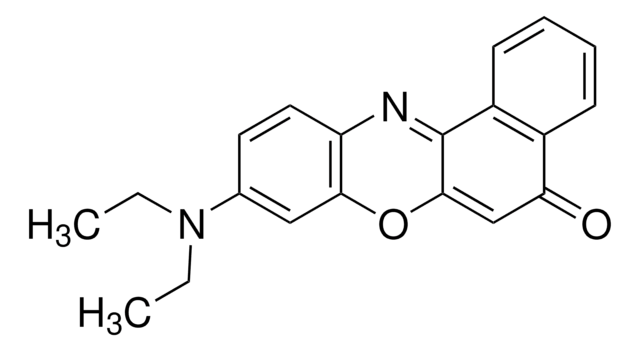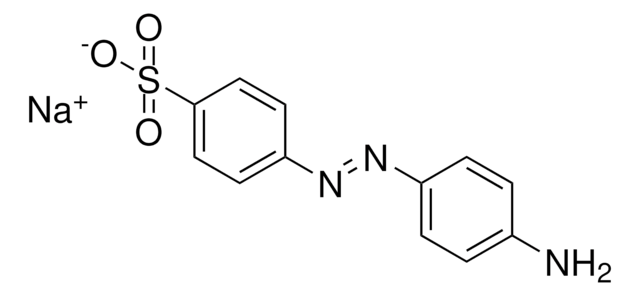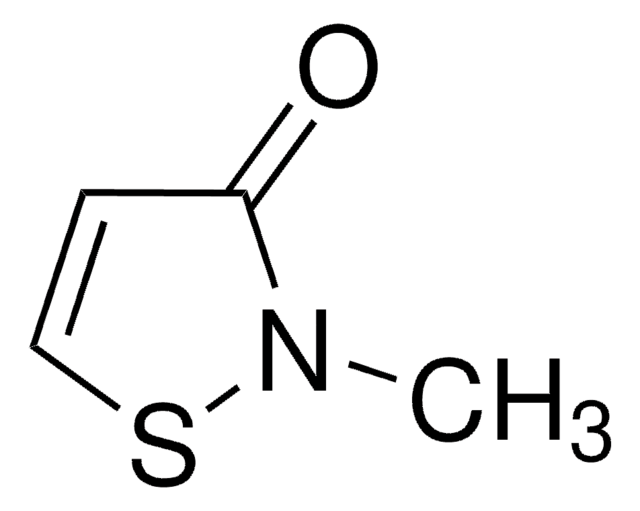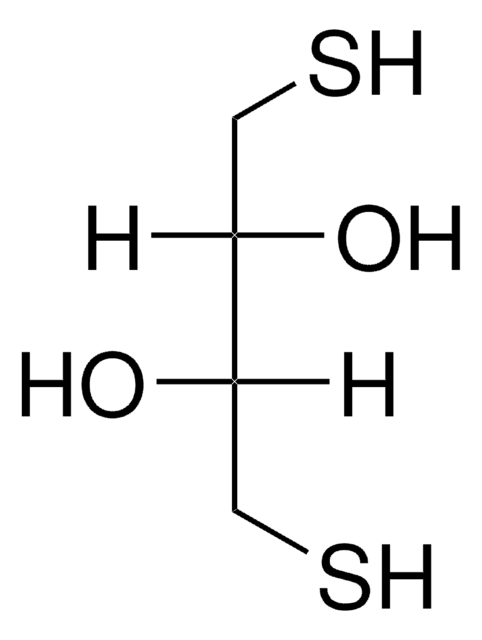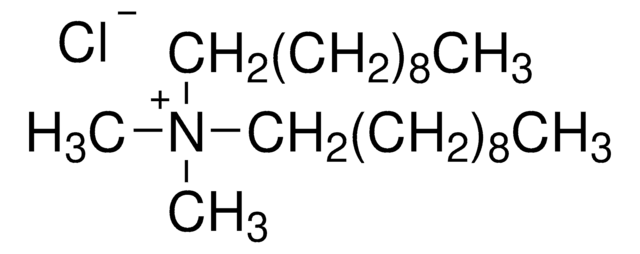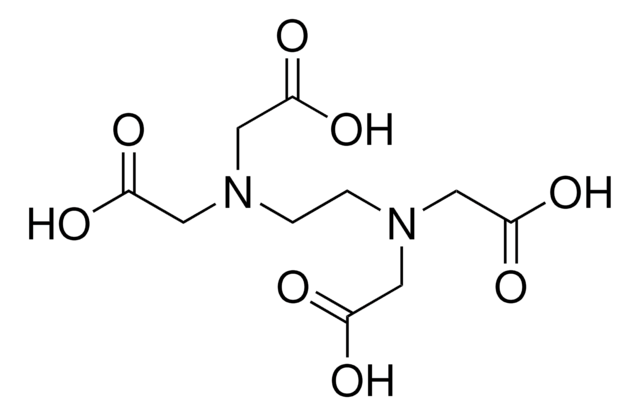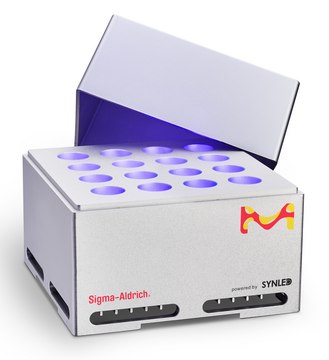推荐产品
质量水平
方案
≥95%
表单
liquid
折射率
n/D 1.334
密度
0.994 g/mL
储存温度
2-8°C
SMILES字符串
[Na+].[S](=O)(=O)(\N=N\c1ccc(cc1)CCCCCC)[O-]
InChI
1S/C12H18N2O3S.Na/c1-2-3-4-5-6-11-7-9-12(10-8-11)13-14-18(15,16)17;/h7-10H,2-6H2,1H3,(H,15,16,17);/q;+1/p-1/b14-13+;
InChI key
GOFLQKOPOSFUCU-IERUDJENSA-M
应用
4-Hexylphenylazosulfonate (Azo) is a photocleavable anionic surfactant developed by the Ge lab for use in high-throughput top-down and bottom-up proteomics by mass spectrometry (MS). Initially, the reagent showed a breakthrough as an improved method for top-down analysis [Brown et al. 2019]. Top-down analysis looks at intact proteins, while bottom-up analysis uses digested proteins. Of the two, top-down analysis is preferable for detecting post-translational modifications and sequence variations. Bottom-up is more commonly used and is likely to detect more proteins. This reagent was also shown to work for sample extraction that can be used for both top-down and bottom-up analysis on the same sample to maximize data collection[Brown et al. 2020].
Surfactants are required for protein extraction especially for challenging classes of protein including membrane proteins[Brown et al. 2020] and extracellular matrix proteins[Knott et al. 2020], but surfactants suppress the signal in MS. While removing a surfactant will improve the signal, this can cause protein loss and degradation. Azo allows for easy removal since it can be rapidly degraded using ultraviolet irradiation (λmax = 305 nm). Using Azo in this way reduces protein loss and gives an improved signal. Please see the Ge lab publications for information on using this product [Brown et al. 2019, Brown et al. 2020, Knott et al. 2020, and Aballo et al. 2021].
Product can be used with our line of photoreactors: Including Penn PhD (Z744035) & SynLED 2.0 (Z744080)
Surfactants are required for protein extraction especially for challenging classes of protein including membrane proteins[Brown et al. 2020] and extracellular matrix proteins[Knott et al. 2020], but surfactants suppress the signal in MS. While removing a surfactant will improve the signal, this can cause protein loss and degradation. Azo allows for easy removal since it can be rapidly degraded using ultraviolet irradiation (λmax = 305 nm). Using Azo in this way reduces protein loss and gives an improved signal. Please see the Ge lab publications for information on using this product [Brown et al. 2019, Brown et al. 2020, Knott et al. 2020, and Aballo et al. 2021].
Product can be used with our line of photoreactors: Including Penn PhD (Z744035) & SynLED 2.0 (Z744080)
法律信息
PCT/US2019/035447
储存分类代码
10 - Combustible liquids
WGK
WGK 2
Photocleavable Surfactant-Enabled Extracellular Matrix Proteomics.
Knott S J, et al.
Analytical Chemistry, 92(24), 15693-15698 (2020)
Kyle A Brown et al.
Angewandte Chemie (International ed. in English), 59(22), 8406-8410 (2020-02-26)
Mass spectrometry (MS)-based proteomics provides unprecedented opportunities for understanding the structure and function of proteins in complex biological systems; however, protein solubility and sample preparation before MS remain a bottleneck preventing high-throughput proteomics. Herein, we report a high-throughput bottom-up proteomic
Ultrafast and Reproducible Proteomics from Small Amounts of Heart Tissue Enabled by Azo and timsTOF Pro..
Aballo T J, et al.
Journal of Proteome Research, 20(8), 4203-4211 (2021)
Kyle A Brown et al.
Nature methods, 16(5), 417-420 (2019-04-17)
We report the identification of a photocleavable anionic surfactant, 4-hexylphenylazosulfonate (Azo), which can be rapidly degraded by ultraviolet irradiation, for top-down proteomics. Azo can effectively solubilize proteins with performance comparable to that of sodium dodecyl sulfate (SDS) and is compatible
我们的科学家团队拥有各种研究领域经验,包括生命科学、材料科学、化学合成、色谱、分析及许多其他领域.
联系技术服务部门